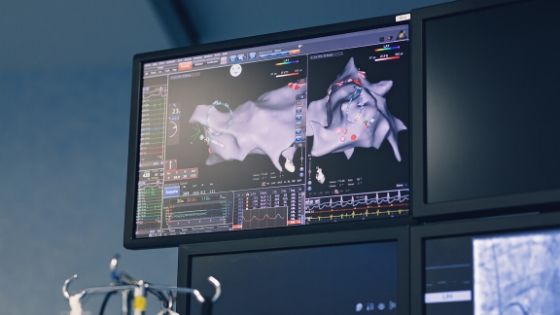Fluoroscopy exams aren’t as well known as some of their imaging test counterparts. When a patient hears they need an MRI, X-ray, or CT scan, they know what to expect, but that might not be the case when they hear they need a fluoroscopy. However, a fluoroscopy is an extremely useful procedure. That’s why it’s important for both you and your patients to know what fluoroscopy is and why you need it.
What Is Fluoroscopy?
Fluoroscopy is a way of studying moving body structures. It’s similar to an X-ray exam, except it takes real-time moving images rather than the snapshot photograph that a normal X-ray captures. When explaining to a patient what fluoroscopy is and why you need it, you can describe it as a sort of X-ray movie. Medical professionals use fluoroscopy to obtain a better view of parts of the body—such as bones, muscles, joints, or organ systems—as they move, thus allowing them to evaluate the body’s performance.
How Does Fluoroscopy Work?
A fluoroscope—the special imaging device used in a fluoroscopy test—uses unique imaging technology to produce these moving images. It passes a continuous X-ray beam through the body part you need to examine, then transmits that beam to a monitor so you can view the results in real time. A contrast dye is commonly used to make the organs or structures you are trying to study more visible. Depending on the reason for the fluoroscopy, you may have to ask the patient to readjust, move certain body parts, or hold their breath in order to get a clear image. Sometimes, the procedure will also require catheter insertion or a form of anesthesia. While the procedure itself isn’t painful, the potential injections might be. Ensure your patient is as comfortable as possible by using high-quality and easy-to-use fluoroscopy tables.
Why Use Fluoroscopy?
There are a variety of reasons why you may need to perform a fluoroscopy exam. It can be used for diagnoses, treatment, or as an image-guided tool for minimally invasive procedures. Some examinations that might include a fluoroscopy are:
- Barium X-rays
- Cardiac catheterization
- Myelogram
- Enteroclysis
- Lumbar puncture
During these and other procedures, fluoroscopy is used alone or with other diagnostic tools. The images provided by a fluoroscope during these procedures can check for blood clots, ensure bones or joints are healthy, check that organ systems are functioning properly, and more.

